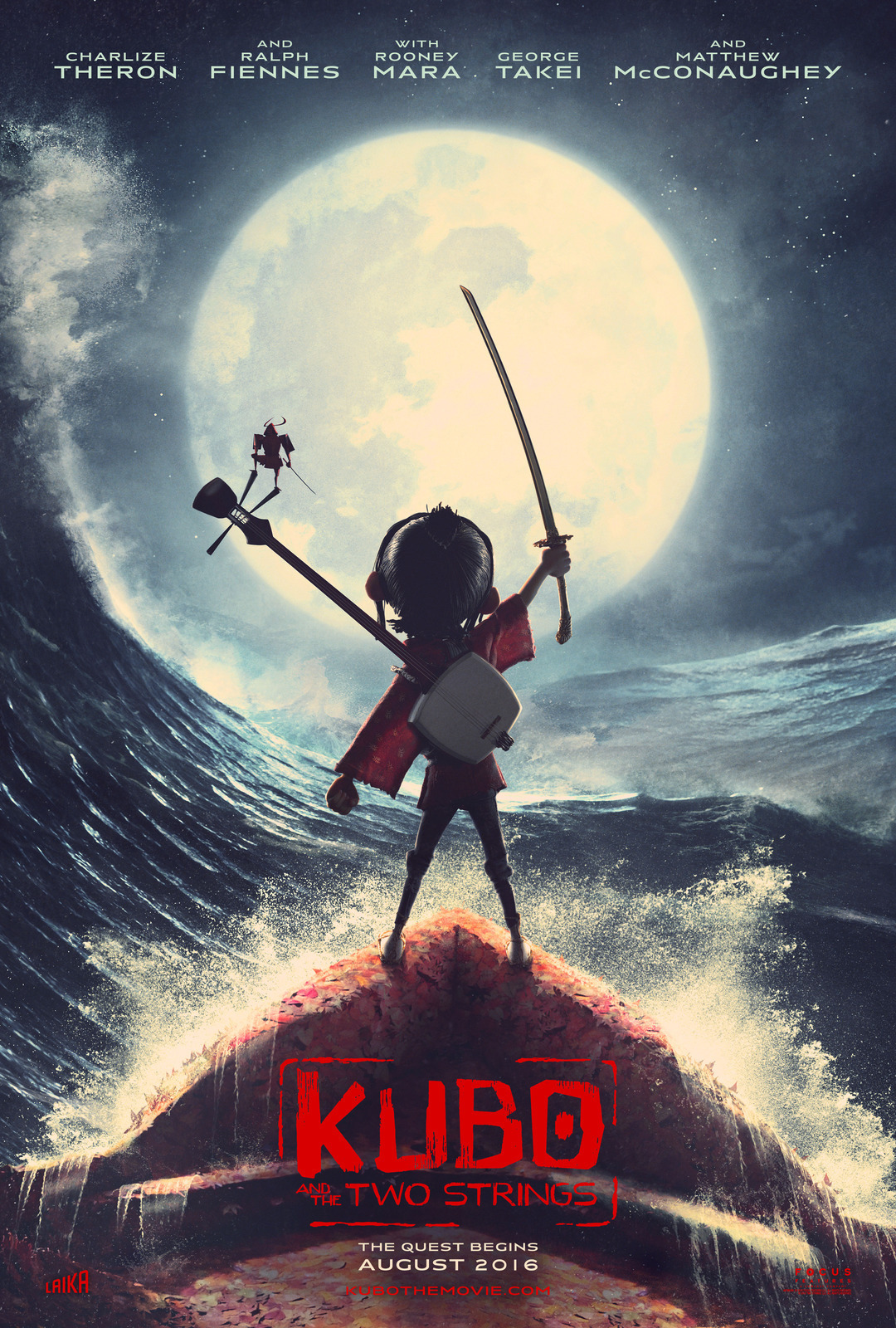“If you must blink, do it now,” the narrator tells us at the beginning of Kubo and the Two Strings. Sage advice, indeed. The brilliantly animated film from Laika (the house behind Para-Norman and Coraline) is worth every single second of your attention. It is storytelling of the highest order, and though the stop-motion animation by its nature isn’t as smooth and refined as the computer work that is dominating these days, it’s no less imaginative and certainly just as compelling (if not more so).
First and foremost Kubo is a wondrous story–the kind that’s told around a campfire, passed down from generation to generation. It would be easy to assume (and, truth be told I did) that the screenplay by Marc Haimes and ParaNorman scribe Chris Butler has its roots in some ancient Japanese bit of folklore, but in truth the idea came from Coraline character designer Shannon Tindle, whose previous story work consists solely of a trio of episodes of Foster’s Home for Imaginary Friends. “Every story has an ending,” our hero tells us throughout the film. Kubo and the Two Strings also has a solid beginning, a rich backstory, and a pretty darn good middle section, too.
The tale begins (after a brief prologue) with young, eye-patched Kubo (Art Parkinson) living in a cave with his semi-catatonic mother. Each day he wanders into town to tell fantastic stories using origami and his trusty guitar-like shamisen. Kubo magically makes the origami dance and fly around as he regales the crowd with stories of battles fought by his late father, the samurai Hanzo. Kubo, though, is warned by his mother that he needs to return home each day before sundown, or his evil aunts (The Sisters, voiced by Rooney Mara) and grandfather (Ralph Fiennes’ The Moon King) will come for him and take his other eye.
One evening, the town holds a festival wherein the villagers summon the memory of their departed loved ones. Kubo unsuccessfully tries to reach his father, just as the boy realizes the sun has gone down. The Sisters arrive to take his eye, but Kubo’s mother rescues him and uses her magic to get him away from the danger just in time.
When Kubo wakes up, he meets Monkey (Charlize Theron), who is there to look over him as he embarks on his quest to find a mythical sword, armor, and helmet needed to defeat The Sisters and Moon King once and for all. The pair are later joined by Beetle (Matthew McConaughey), Hanzo’s former student, who was cursed into his insect form.
More often than not Kubo and the Two Strings plays as a film designed to not only please the kids in the audience but also give parents something to enjoy as well. And while there’s nothing too jarring or frightening, there are more than a handful of tense moments that may result in some flinching by anyone younger than, say, age eight or ten. Overall, though, it’s a movie for all ages and a film for the ages.
Conclusion
Director (and Laika CEO) Travis Knight has created Laika’s best film yet. It’s not only leaps and bounds ahead of much of its recent animated brethren, be it Pixar, Illumination, or otherwise) but it also stands solidly among the best movies overall this year. Full of mind-blowing animation and exquisite design, Kubo and the Two Strings is a stunning achievement, rich in both story and production value. Don’t blink, and whatever you do, don’t miss it.
Rating
5/5 stars
Worth the 3D glasses?
Absolutely, 100%, no question. The animation is jaw-dropping on its own certainly, but if you don’t mind dropping the extra couple bucks, by all means do it.
